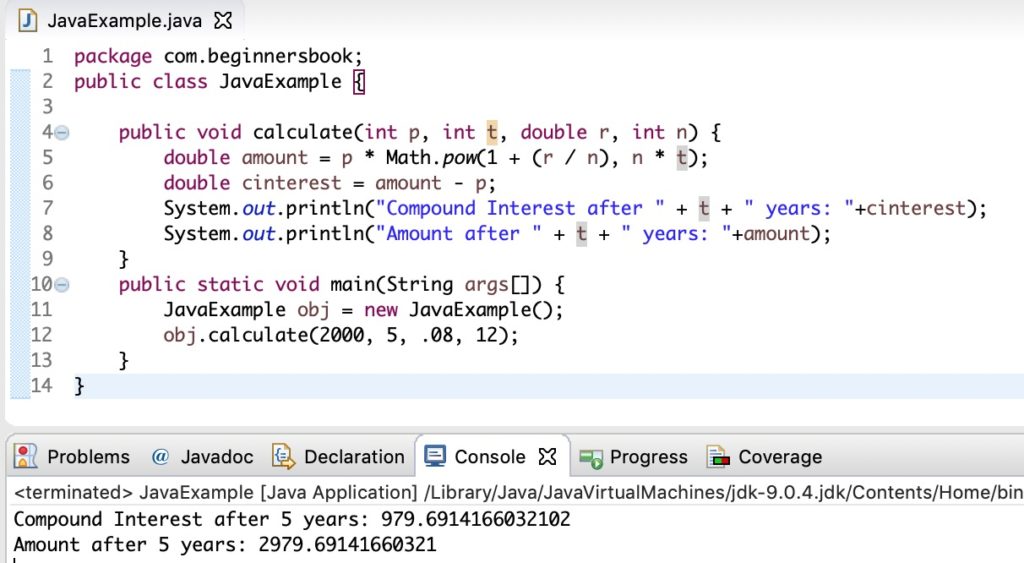

- Bluej program error after first input update#
- Bluej program error after first input manual#
- Bluej program error after first input code#
- Bluej program error after first input download#
When BlueJ is up and running you should see a window that looks something like this: The template is stored in the lib -> english -> templates -> newclass folder. You can also modifying the template that starts when creating new programs and classes. The file called fs with a text editor.This file is located in the lib directory in You can alter some of the defaults for BlueJ my modifying Navigating to the BlueJ directory and double clicking on the bluej.bat icon. The icon you created when you downloaded and installed BlueJ or by In this example I will assume they have been downloaded to the desktop.
Bluej program error after first input download#
You don't have to put them in the BlueJįolder, just remember where you download them to on your computer. Here’s what a structure of the second alarm looks like.Creating and Running programs in BlueJ Getting Started with BlueJĪnd installed BlueJ before completing the following steps.įrom the class web site.
Bluej program error after first input update#
Of course, we need to update the tags we’re using for triggering the alarm as well as the alarms themselves. Now that we have a finished rung, we can copy & paste it as many times as needed until we’ve covered all the alarms. Expanding the Structure to Infinite Alarm Conditions This is used as a reference to the fault & will be used for the HMI application. Therefore, a description containing a unique ID is given to the fault bit. This bit is tied to field buttons as well as an HMI button in the “Main” routine.ĭo note that in RSLogix500, it’s not as simple to give tags a meaningful name. Lastly, the only possible means of de-energizing the fault after it has been triggered is by using the “System Fault Reset” bit.

Doing so satisfies the condition mentioned above. Once the B3:50/0 internal boolean is energized, it’s latched in place by the XIC Instruction which is tied to itself. Since the “System Fault Reset” bit is tied to an XIO, it will allow the final bit to energize should the “TEMP HIGH” fault trigger through the I0:0 input on the MicroLogix 1100. This instruction may be replaced by any other which will cause the alarm to energize. The first XIC instruction is the trigger for the alarm. It’s composed of a few basic instructions which we’ve covered in other tutorials. A unique identifier displayed on an HMI screen will allow a skilled engineer to immediately trace the logic on the Programmable Logic Controller and find the root cause of the issue.īuilding an Alarm Rung in Ladder Logix RSLogix500Ī basic alarm rung is shown below. Furthermore, it’s something which programmers often use to troubleshoot the system.
Bluej program error after first input manual#
Alarms must remain latched in until they are cleared by manual intervention.Therefore, it’s important to make them easily accessible & visible to a novice programmer, technician, etc. However, alarms, faults & warnings are the most critical items as they protect the process from failure. It’s easy to be confused by the general logic written by another programmer.Alarms must reside in a separate routine.Here’s a brief list of some of these best practices which I’ve discovered over the years. The reason for this, of course, is that there are certain principles when it comes to alarms, faults & warnings. Basic Alarm / Fault Best PracticesĪs you work & observe the Alarm structures within PLC applications, you’ll notice that they generally follow a similar structure. The final outcome will be determined by the programmer. However, the programming of these is absolutely the same. In other words, there are two types of errors: one which will cause a stop and the other which will not. My approach is quite simple: a fault will cause a stop of a certain process a warning will only be a visual indication for the operator. Whatever the source of the error, the system must be able to capture the occurrence and to act accordingly.Ī common question and debate between PLC programmers is the distinction between the levels of faults & the proper designation of each one. These conditions can be detected by sensors, be the result of certain operator errors or be programmed in software.


Bluej program error after first input code#
Ultimately, this code is needed to make sure that equipment is brought to a safe condition after a critical failure. This logic allows the programmer to capture any abnormalities, alert the operator of a failure, and prevent system damage. Alarms, Faults, and Warning play a critical role within every PLC Program.


 0 kommentar(er)
0 kommentar(er)
